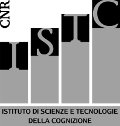+me is an experimental interactive soft toy, looking like a panda, developed for young children. When touched on the paws or head (inputs), the toy can emit attractive responses such as colored lights and amusing sounds (outputs). +me is wirelessly connected to a control tablet through which an adult caregiver can modify its input-output contingencies so as to produce different, rewarding response patterns using the same device. Given these features, we propose +meas a potential novel tool to support the therapy of Autism Spectrum Disorder (ASD). The allure of the device could be exploited to capture the attention and encourage the social interaction of toddlers during play activities with therapists. In this pilot study, +me was tested on two small groups of children aged 30-48 months, one group diagnosed with ASD and the second with Communication Disorder, a condition that often presents-especially at an early age-overlapping symptoms with ASD. The proposed play activities aimed to foster simple imitative behaviors and stimulate the engagement of the children. The results were compared with those of a previous test run on Typically Developed children. Preliminary observations, based on the analysis of video recordings, suggest that, on average, +me is able to encourage a positive engagement and that different groups tend to manifest some different behaviors.
Acceptability of the Transitional Wearable Companion " plus me" in Children With Autism Spectrum Disorder: A Comparative Pilot Study
Tipo Pubblicazione:
Articolo
Publisher:
Frontiers Research Foundation, Switzerland
Source:
Frontiers in Psychology 11 (2020). doi:10.3389/fpsyg.2020.00951
info:cnr-pdr/source/autori:Sperati, Valerio; Ozcan, Beste; Romano, Laura; Moretta, Tania; Scaffaro, Simone; Faedda, Noemi; Turturo, Giada; Fioriello, Francesca; Pelosi, Simone; Giovannone, Federica; Sogos, Carla; Guidetti, Vincenzo; Baldassarre, Gianluca/
Date:
2020
Resource Identifier:
http://www.cnr.it/prodotto/i/429812
https://dx.doi.org/10.3389/fpsyg.2020.00951
info:doi:10.3389/fpsyg.2020.00951
https://www.frontiersin.org/articles/10.3389/fpsyg.2020.00951/full
Language:
Eng



